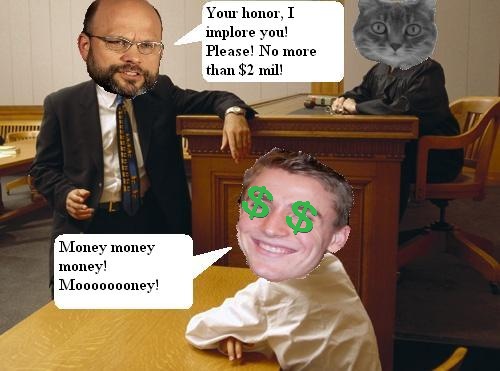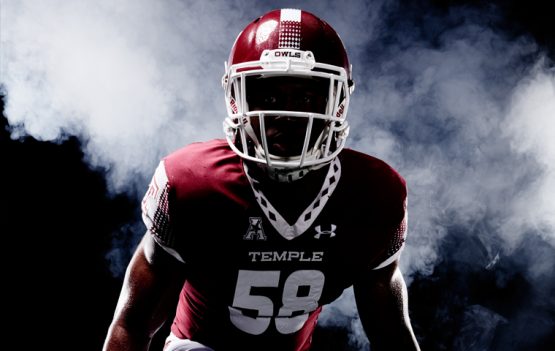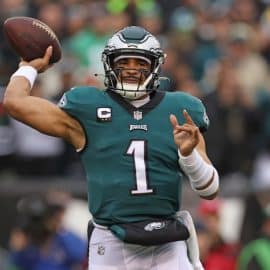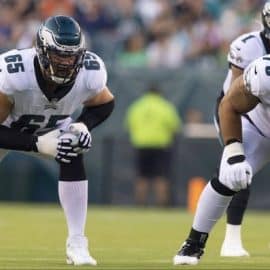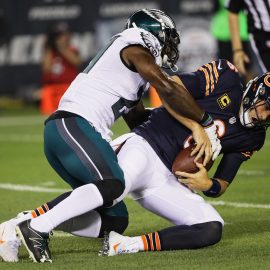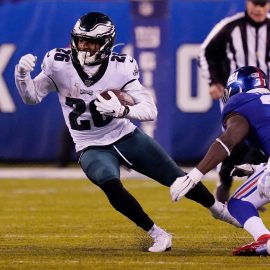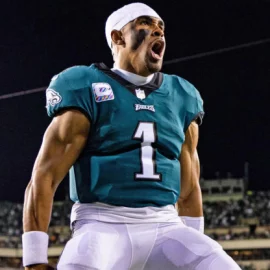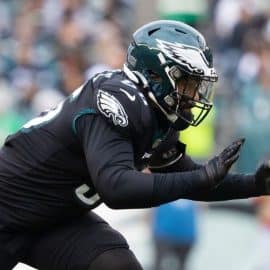Watching the Steelers prevail over the Browns Thursday night, I was impressed by Chris Gocong’s performance at linebacker for the Browns…and how he almost saved the night for Cleveland before Colt McCoy was knocked senseless by James Harrison…
And I wondered… did we give up on Gocong too soon?
Chris Gocong… 6-2, 263, 6th year out of Cal Poly…3rd round draft pick in ’06… smart guy (biomedical engineering degree)… now playing at a high level for the Browns…
Gocong shined his brightest in one of the greatest goal-line stands I’ve ever witnessed in the Steelers-Browns game… It was a classic combination of reading and reacting with strength by a linebacker… And it should have turned the game around for the Browns, who were trailing 7-3 with 7 minutes to go in the 4th quarter… but Cleveland’s inept offense in the face of a fierce Pittsburgh pass rush took care of that momentary Browns’ inspiration.
It took me back to an interview with Gocong I never published from way back in October 2011… the interview was sent to me by Jodie Valade who works for the Cleveland Plain Dealer. I didn’t publish it then because I thought looking back at past Eagles players would be somewhat of an insult to our current linebacking corps, which at the time was struggling through some major transition— with the demotion of Casey Matthews and the juggling of Moise Fokou and Jamar Chaney and Brian Rolle from WILL to MIKE and SAM and back again. It was a crazy time for Eagles linebackers.
Plus, I still wasn’t sold at the time on Gocong as a big game-changing type linebacker…
But now I’m rethinking my position on Gocong…
It should be noted that the Browns have converted to a 4-3 defensive scheme after six years in a 3-4 scheme… for those readers who need a refresher course, 4-3 means three linebackers playing behind four defensive linemen… and 3-4 means four linebackers playing behind three linemen. In 2010 GM Tom Heckert’s two biggest additions to the Browns roster included linebackers Scott Fujita and Chris Gocong, both of whom had backgrounds in a 4-3 system.
Gocong spent his first four NFL seasons in Philadelphia’s 4-3, but was just an adequate starter in the middle and on the strong side. He got shipped to Cleveland after the 2009 season. But enter defensive coordinator Dick Jauron, who somehow found a role in which Gocong could begin to flourish.
Suddenly, under Jauron, Gocong found his voice and his newfound stature as a brainy linebacker with the brawn to back it in the NFL.
You can look at the game-changing improvement in Gocong and say, “Gee, maybe defensive coaching does make a difference,” or you can say “Hey, it takes five or six years for a linebacker to finally get the experience and the know-how it takes to make a difference in the NFL.” Most likely, employing Brizer’s metrics, it’s a combination of both.
Anyway, in this short-lived lull before the Eagles game in Miami on Sunday, I thought it only fair to publish the interview with Chris Gocong that was shyte-canned in October:
Q: You were a biomedical engineer major at Cal Poly-San Luis Obispo. What did you plan to do with that, and do you still hope to use that degree?
A: I really went into the engineering field with an open mind, and I realized I like the biomed field. But really, career-wise, you could go a lot of places. I think I would go into the endoscopic camera area. My dad is in that business. He designs and manufactures endoscopic cameras. I love 3D modeling to Photoshopping, all that good stuff.
Q: You went to a I-AA school. Did you ever feel like you had to prove yourself in football?
A: No, not really because I wasn’t really trying to go into the NFL. I played because I had a scholarship, and I loved playing football. And then once it kind of got to where I was invited to the combine and all-star games, I realized there is a little bit of, “Oh yeah, but it was I-AA.” That sort of stigma. It seemed like you did have a couple extra hurdles to go through. But other than that, I didn’t really think about it too much. I think coming from an engineering school, we might have eight or nine or 10 engineers on a team, and it’s a usual thing. It’s not unusual. We had study groups and stuff like that. But it’s all frame of reference, I guess.
Q: Rumor has it that you used to play guitar pretty well in a band in college called Void. Do you still play?
A: I play piano and guitar whenever I can. I try to mess around on it. But when you’re in season and you dislocate a couple fingers and this and that, it kind of slows you down.
Q: Do you have any superstitions?
A: No, but I do have a routine. I don’t like to be rushed, so I get there early. It’s not superstition, but it is routine. And if I do something one way and I have a good game, I’ll probably do it the same way the next game. I wouldn’t call it superstition.
Q: You were a defensive end in college and moved to linebacker in the NFL. What was that transition like?
A: It was tough. I literally never dropped [back into coverage] in college. Never. It was a big learning experience just mentally and physically, going backward and learning coverage. The playbook is way different. It’s changing your mind-set from “I’m going to go get the quarterback,” to “I have to read routes, I have to read patterns.” A lot of thinking involved. So it took some getting used to. That’s the other thing I realized: It’s one thing to be book smart and another thing to be football smart. Having a good memory does help.
That was it…the entire interview. I didn’t think twice about omitting it earlier in the season until I saw Gocong’s monster performance against the Steelers last night. Did the Eagles let a franchise late-bloomer at linebacker get away from them? Maybe… but it happens a lot in the NFL. Personnel decisions are the trickiest of all.
Add The Sports Daily to your Google News Feed!
